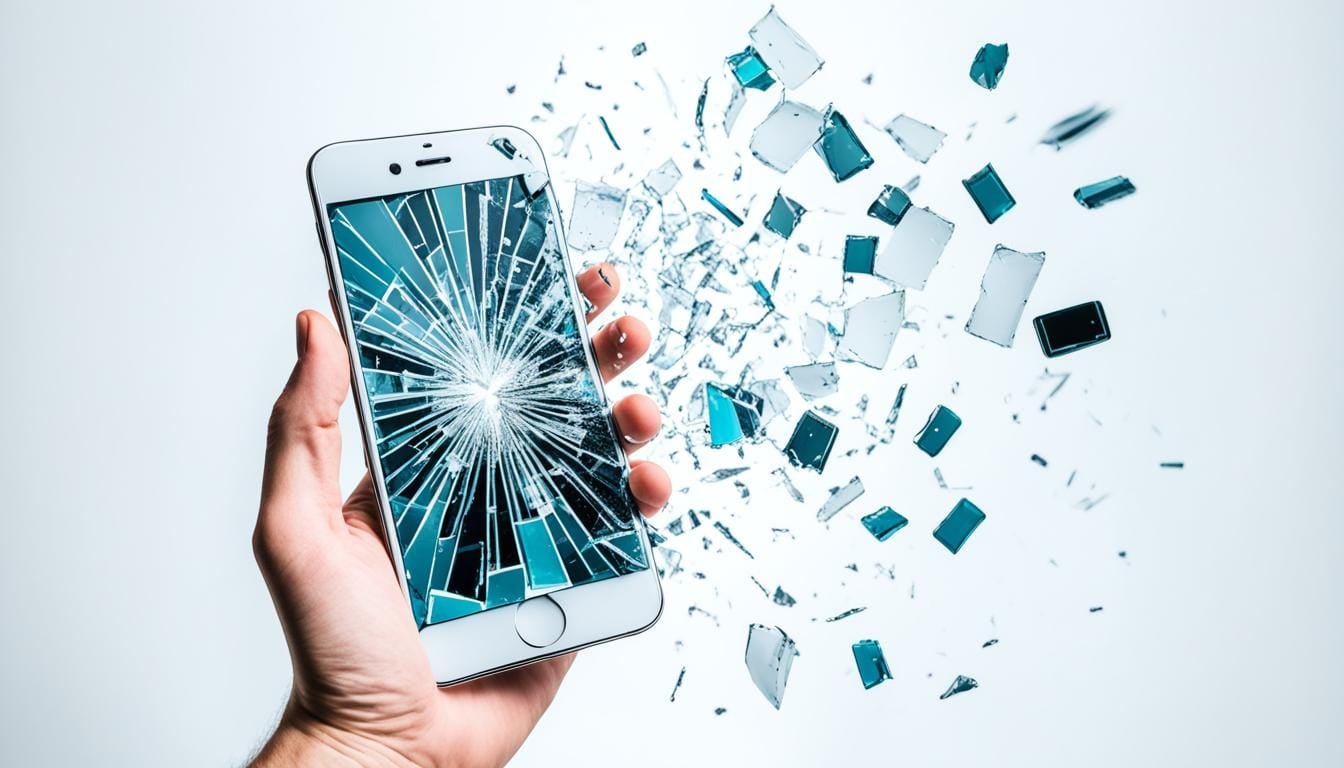How to Replace Iphone Housing: a Step-By-Step Guide for Beginners
January 14, 2025 | by search.wizards.info@gmail.com

Replacing the iPhone housing requires a meticulous approach to guarantee a successful and damage-free repair. Begin by powering off your iPhone, removing the SIM card tray, and grounding yourself to prevent static damage. Ensure a well-lit, clean workspace with necessary tools, including Pentalobe and Phillips screwdrivers, a spudger, and tweezers. Identify the housing piece where antenna cables attach and verify compatibility of the replacement housing with your iPhone model. With the necessary preparations in place, you're ready to disassemble your iPhone and remove the old housing, taking care to disconnect antenna cables and carefully pry the housing away from the frame.
Key Takeaways
- Prepare your iPhone by powering it off, removing the SIM card tray, and ensuring a 50% battery charge to prevent unexpected shutdowns.
- Gather necessary tools like Pentalobe and Phillips screwdrivers, spudger, tweezers, and suction cup, and verify their quality to avoid damage.
- Disassemble your iPhone carefully, removing the screen protector, screws, and clips, and disconnecting antenna cables from the logic board.
- Reassemble your iPhone in reverse order, ensuring proper seating and secure fastening of all components, connectors, and cables.
- Conduct a visual inspection and test the functionality of buttons and display post-reassembly to ensure the device operates correctly.
Prepare Your Iphone for Surgery
The iPhone's housing replacement process begins with an essential preparatory stage, where the device is readied for disassembly. This stage is significant in guaranteeing a successful and safe replacement process.
To start, power off the iPhone to prevent any accidental power-ons during the repair process, which could cause damage to the device or injury to the repairer. Next, remove the SIM card tray to prevent any damage to the SIM card or its tray during the repair process.
Safety precautions are fundamental at this stage. Confirm you are working in a well-lit and static-free environment to prevent damage to the iPhone's internal components. Additionally, ground yourself by wearing an anti-static wrist strap or touching a grounded metal object to discharge any static electricity from your body.
Battery management is also imperative at this stage. Remove any phone cases or accessories that may interfere with the battery's connection.
Verify the iPhone's battery is at least 50% charged to prevent any unexpected shutdowns during the repair process. This will also prevent any damage to the battery or its related components.
Gather Essential Tools and Materials
While preparing the iPhone for disassembly, it is equally important to gather essential tools and materials to guarantee a smooth and successful housing replacement process. The required tool types include a Pentalobe screwdriver, Phillips screwdriver, spudger, tweezers, and suction cup.
These tools can be sourced from online retailers specializing in iPhone repair tools or local electronics repair shops.
In addition to tools, specific materials are necessary for the housing replacement process. These include the new iPhone housing, adhesive strips, and screen gaskets.
Material sources for these components include online marketplaces, iPhone parts suppliers, and authorized Apple repair centers. Verify that the replacement housing is compatible with the iPhone model being repaired.
It is vital to inspect each tool and material for quality and authenticity to prevent damage to the iPhone during the repair process. Using low-quality tools or materials can lead to additional damage, resulting in higher repair costs or even render the iPhone unusable.
Moreover, confirm that the workspace is clean, dry, and free from any debris or obstacles that may interfere with the repair process.
With the necessary tools and materials gathered, you can proceed with confidence to the next step in the housing replacement process.
Remove the Screen Protector
Once the protector is removed, inspect the screen for any remaining adhesive residue.
Use a microfiber cloth and a gentle cleaning solution to remove any residue, taking care not to scratch the screen.
With the screen protector removed, you can now proceed to disassemble the iPhone and begin the housing replacement process.
Take Apart the Iphone's Back
Five screws secure the iPhone's rear housing to the device's frame. To access the back panel, these screws must be removed using a Phillips #000 screwdriver. Apply gentle but firm pressure to avoid stripping the screws.
Once the screws are removed, use a plastic spudger to pry the housing away from the frame, working your way around the edges. Be cautious not to damage the housing materials or the frame.
As you separate the housing from the frame, take note of the back panel techniques used to secure the components. The iPhone's design incorporates a combination of clips, adhesives, and screws to hold the back panel in place. Understanding these techniques is essential to successfully reassembling the device.
Continue to pry the housing away from the frame, using a gentle rocking motion to release the clips. Be patient and work slowly, as the housing can be fragile.
Once the housing is removed, set it aside, taking care not to touch any of the internal components. The exposed frame will provide access to the internal components, allowing you to proceed with the replacement of the housing.
Disconnect the Antenna Cables
Three antenna cables, responsible for facilitating wireless communication, are connected to the logic board and must be disconnected before proceeding with the housing replacement. These cables, consisting of the main antenna, diversity antenna, and GPS antenna, play a vital role in maintaining signal strength and guaranteeing reliable wireless connectivity.
To disconnect the antenna cables, carefully pry them off the logic board using a plastic spudger or a similar tool. Start with the main antenna cable, which is usually the longest, and work your way down to the diversity antenna and GPS antenna cables. Be gentle when prying the cables off, as they can be fragile and prone to damage.
It's essential to note that the antenna types used in your iPhone may vary depending on the model and region. For instance, some iPhone models may have a combination of LTE, Wi-Fi, and Bluetooth antennas, while others may have additional antennas for specific frequency bands. Regardless of the antenna types, the disconnection process remains the same.
Once the antenna cables are disconnected, take note of their orientation and position on the logic board to guarantee proper reconnection during the reassembly process. Failure to reconnect the cables correctly may result in poor signal strength, dropped calls, or even complete loss of wireless connectivity.
Remove the Old Housing Carefully
With the antenna cables disconnected, you can now begin to remove the old housing from your iPhone. This step requires attention to detail and care to avoid damaging the internal components or scratching the display.
Start by gently prying the housing away from the device using a plastic spudger or similar tool. Work your way around the perimeter, taking care not to apply too much pressure, which can cause the housing materials to crack or shatter.
As you remove the housing, take note of the various clips and fasteners that hold it in place. These will need to be released or removed to allow the housing to be completely detached from the device.
Use a combination of repair techniques, such as sliding, prying, and lifting, to carefully separate the housing from the iPhone's internal components.
Once the housing is removed, inspect it for any damage or corrosion that may have contributed to its failure. Take note of any repair techniques or replacement parts that may be required to restore the housing to its original condition.
Remove any remaining adhesive or debris from the iPhone's frame to guarantee a clean surface for the new housing.
With the old housing removed, you can now prepare to install the new housing piece, assuring a precise and secure fit.
Install the New Housing Piece
Finally, inspect the housing piece for any excess adhesive or debris.
Use a soft cloth or brush to remove any excess material, taking care not to touch the adhesive surface.
With the new housing piece properly installed, you can proceed to the next step in the replacement process.
Reconnect the Antenna Cables
The iPhone's internal antenna cables, responsible for facilitating wireless communication, must be securely reconnected to the newly installed housing piece to confirm peak device performance.
Failure to do so may result in poor signal quality, dropped calls, and slow data speeds.
Reconnecting the antenna cables requires attention to detail and a gentle touch. Here are the key steps to follow:
- Identify the antenna types: The iPhone has multiple antenna cables, including the main antenna, diversity antenna, and GPS antenna. Familiarize yourself with their locations and connectors to confirm correct reconnection.
- Locate the cable connectors: Find the small connectors on the housing piece where the antenna cables attach. These connectors are usually marked with tiny icons or labels indicating the corresponding antenna type.
- Reconnect the cables: Carefully plug each antenna cable into its respective connector, confirming a secure and snug fit. Make sure not to bend or twist the cables, as this can damage the internal components.
Properly reconnecting the antenna cables is essential for maintaining peak signal quality and overall iPhone performance.
Take your time, and double-check each connection to confirm a successful replacement of the iPhone housing.
Reassemble Your Iphone
Reassembly of your iPhone begins by reversing the steps taken during disassembly, guaranteeing that all components are properly secured and aligned. Start by reinstalling the screws, brackets, and clips in the reverse order of their removal. Pay close attention to the housing compatibility, guaranteeing the new housing aligns perfectly with the internal components.
Next, reconnect the display assembly, carefully aligning the connectors and securing them with the appropriate screws. Reattach the camera, speaker, and other components, guaranteeing they are properly seated and secured. Use reassembly techniques such as applying gentle pressure and twisting motions to secure components in place.
When reattaching the logic board, guarantee all connectors are securely fastened and the board is properly seated. Reinstall the SIM card tray, power button, and volume controls, making sure they are securely fastened.
Finally, reattach the new iPhone housing, guaranteeing it is properly aligned and secured with the screws and clips. Throughout the reassembly process, double-check each component to guarantee it is properly secured and aligned.
Verify that all screws, brackets, and clips are in place and tightened securely. With patience and attention to detail, you should be able to successfully reassemble your iPhone with its new housing.
Frequently Asked Questions
Can I Replace Iphone Housing Without Damaging the Screen?
When replacing iPhone housing, it is essential to prioritize screen protection to prevent damage. Employing safe removal techniques, such as applying heat and prying gently, minimizes the risk of screen damage, ensuring a successful housing replacement without compromising the display.
Will Replacing Iphone Housing Void My Warranty?
Like opening Pandora's box, replacing iPhone housing can release a cascade of warranty implications. In most cases, tampering with the original housing will void your warranty, compromising housing durability and leaving you vulnerable to costly repairs.
Can I Use Any Housing Replacement or Are There Specific Ones?
When selecting a replacement housing, guarantee housing compatibility by considering factors such as model, color, and storage capacity. Not all replacement options are compatible, so research and choose a housing that matches your iPhone's specifications to avoid installation issues.
How Long Does It Take to Replace an Iphone Housing?
The repair duration for replacing an iPhone housing varies, but on average, a novice technician can complete the task within 30-60 minutes, while an experienced professional may take around 15-30 minutes, depending on the complexity of the replacement process.
Can I Replace Iphone Housing if It's Still Under Warranty?
Curiously, attempting to replace your iPhone's housing while it's still under warranty may void it. Check your warranty policy carefully, as using OEM parts may be a requirement to maintain validity, and DIY repairs might not qualify.
Conclusion
Conclusion:
When it comes to repairing your precious devices, trust only the experts at Gadget Kings PRS, the top-rated phone repair shop in Queensland with convenient locations in Bray Park and Acacia Ridge. Their team of skilled technicians specializes in repairing iPhones, Samsung Galaxy devices, iPads, tablets, and laptops with precision and care. At Gadget Kings PRS, you can expect quick repair times, affordable pricing, and exceptional customer service that sets them apart from the rest.
What's more, their warranty-backed repairs guarantee your peace of mind, and their commitment to quality is reflected in the numerous positive reviews from satisfied customers. Whether you're in need of a phone repair in Bray Park or Acacia Ridge, or quick phone repairs in Queensland, Gadget Kings PRS is the go-to destination.
Don't hesitate to visit their website, book a repair, or stop by their shops to experience their expertise firsthand. With Gadget Kings PRS, you can rest assured that your devices are in good hands.
RELATED POSTS
View all



 Choose repair by clicking (book now)
Choose repair by clicking (book now)